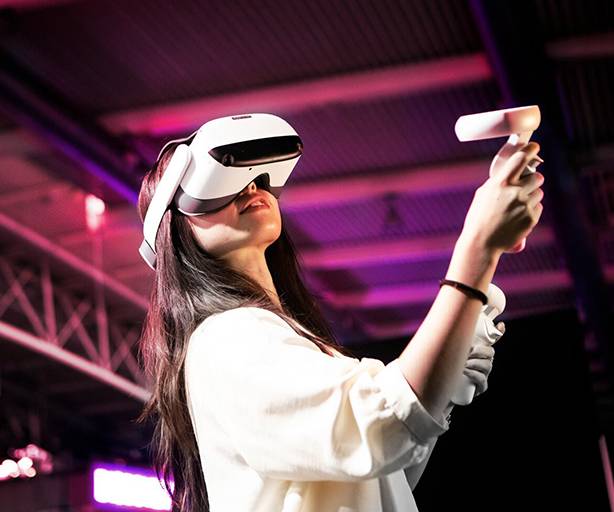Virtual Reality (VR) is revolutionizing how we interact with digital worlds, creating immersive experiences that blend realism and fantasy. At the core of this technology are intricate technical elements that work together to simulate environments that users can see, hear, and even touch. Here, we explore the essential technical aspects of VR, from hardware to software, that shape the virtual worlds we experience.
VR Hardware: The Essentials
One of the primary technical components of VR lies in its hardware. VR headsets, like the Oculus Quest and HTC Vive, use specialized screens and lenses to create stereoscopic images. Each eye views a slightly different image, mimicking the way our eyes perceive depth in the real world. This binocular disparity is crucial for 3D perception and gives VR its immersive feel.
In addition to headsets, controllers play a pivotal role. These handheld devices track user movements, letting them interact with objects in the virtual environment. More advanced VR systems, such as the Valve Index, use full-body tracking sensors to replicate physical motions, adding another layer of realism. Some setups even incorporate haptic feedback, allowing users to feel vibrations and other tactile sensations, bridging the gap between visual immersion and physical feedback.
Software and Graphics
VR software development involves a mix of high-quality 3D graphics and real-time rendering. VR applications are built using engines like Unity or Unreal Engine, both of which support VR-specific functionalities like spatial audio and optimized frame rates. Frame rate is critical in VR since low frame rates can cause lag and motion sickness; most VR systems aim for 90 frames per second to ensure smooth experiences.
Rendering for VR also requires optimized graphics to maintain high frame rates without compromising image quality. Developers use techniques like foveated rendering, which focuses on rendering high-quality visuals where the user is looking while reducing detail in peripheral areas. This technique conserves processing power and helps reduce the load on the headset’s processor.
Motion Tracking and Spatial Audio
Motion tracking is key for delivering an immersive VR experience. Headsets equipped with gyroscopes and accelerometers track head movements, while external sensors or cameras monitor the user's position in physical space. This real-time motion tracking lets users look around and move naturally, creating the feeling of stepping into another world.
Spatial audio complements the visuals by simulating how sound would travel in a real environment. With spatial audio, sounds change based on the user's position and direction, adding to the feeling of presence. If something makes noise behind a user, it’s designed to sound like it’s actually behind them, enhancing situational awareness and realism.
Challenges in VR Technology
Despite these advancements, VR technology faces several challenges. High-quality VR is resource-intensive, requiring powerful processors, graphics cards, and high-resolution displays. Furthermore, physical side effects, such as motion sickness, remain an issue, especially for users sensitive to rapid movement in virtual spaces. Developers continuously optimize VR experiences to balance performance and quality, but there’s room for improvement as technology advances.
Conclusion
The technical foundation of VR is vast and complex, involving precise coordination of hardware, software, and sensory technology. As these technical aspects continue to advance, VR will offer increasingly immersive and lifelike experiences. With ongoing innovations in VR hardware, optimized rendering techniques, and realistic sensory integration, the future of VR promises endless possibilities for gaming, education, healthcare, and beyond. As we look forward to a world where VR is seamlessly integrated into our lives, understanding these technical elements is key to appreciating the incredible potential of this transformative technology.


